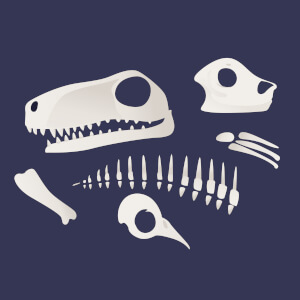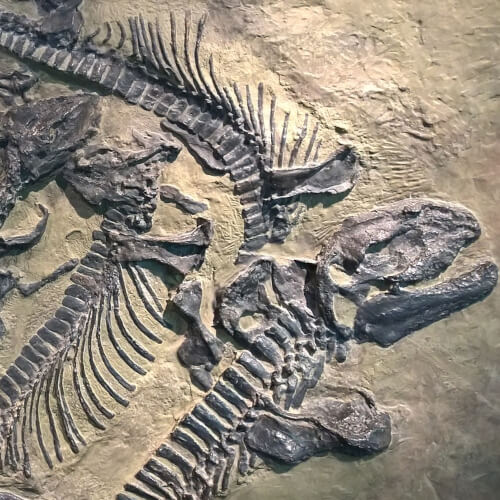



Fossils are the preserved remains or traces of ancient living organisms that provide evidence of the history of life on Earth. They can include the hard parts of an organism, such as bones, shells, teeth, and even pollen grains, or the traces left behind by the organism, such as footprints, burrows, and coprolites (fossilized poop). Fossils can be found in rocks of different ages and types, from the oldest rocks that are billions of years old to relatively young rocks that are only thousands of years old.
The study of fossils, known as paleontology, is an important branch of science that helps us understand how life has evolved over time. Fossils provide information about the anatomy, behavior, and ecology of ancient organisms, as well as the environments they lived in. They also provide evidence of the occurrence of mass extinctions, the timing of evolutionary events, and the formation of different types of rocks and minerals.
Fossils come in many different types and shapes, with all of them having different ways of forming. Here are some of the major ways fossils can form:
Stromatolites are the oldest known fossils on Earth, believed to have originated over 3.5 billion years ago. These structures are formed by the accumulation of layers of sedimentary deposits, created by the activity of ancient cyanobacteria. Cyanobacteria, also known as blue-green algae, are the first known photosynthetic organisms and played a key role in shaping the Earth's early atmosphere.
The oldest known stromatolite fossils were discovered in the Isua Greenstone Belt of Western Greenland by a team of Danish geologists led by Adam A. Bjørnholmen. The rocks in which these fossils were found date back to around 3.7 billion years, making them some of the oldest rocks on Earth, which itself is approximately 4.5 billion years old.
Paleontologists can learn a lot from coprolites, including the types of plants or animals that an animal consumed, its digestive processes, and even its health. For example, a coprolite containing remains of undigested plant material might indicate that the animal was an herbivore, while one containing fragments of bone or teeth might suggest that the animal was a predator.
Analyzing coprolites can also provide valuable information about the ecosystem in which the animal lived. By studying the types of plants and animals represented in coprolites, paleontologists can make inferences about the diversity and abundance of species in the environment. In some cases, coprolites can also reveal evidence of ancient parasitic infections, allowing scientists to better understand the prevalence and impact of parasites on ancient ecosystems.
Most fossils found by scientists are small pieces of animals or plants, including individual bones, teeth, shells, or even just pieces of these structures. Paleontologists study these tiny bits and pieces to learn about the physical characteristics and behavior of ancient organisms. By examining the structure and shape of individual bones, teeth, or shells, they can guess what an animal may have looked like, what it ate, and how it moved. In some cases, fossils can even reveal clues about the environment in which an animal lived, such as the type of vegetation that grew in the area or the climate of the region.
Amber fossils are formed when sap from trees hardens and preserves the something trapped within it. These fossils can provide an incredibly detailed snapshot of ancient life. In some cases, the fossilized remains might still contain pieces of soft tissue, such as skin.
In 2016, a particularly remarkable amber fossil containing the tail of a dinosaur was discovered. This fossil, estimated to be around 99 million years old, was the first direct evidence that some dinosaurs had feathers. The discovery confirmed long-standing theories among paleontologists that feathered dinosaurs were a reality. The fossilized tail was covered in feathers that resembled those of modern birds, providing further evidence of the evolutionary link between birds and dinosaurs.